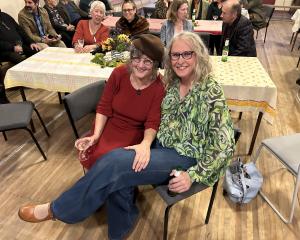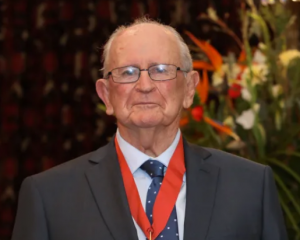The hunt for Lord Lucan began in 1974 after Sandra, the children's nanny, was murdered in the semi-basement floor of their grand six-storey central London home, then occupied by his estranged wife Veronica. Lucan's flat was nearby.
Lucan had a lot of contact with Veronica, doted on his three children, and had a key to the house. The usual proposition is that he hid in the darkened basement kitchen and waited for Veronica to go there to make a routine cup of tea, intending to kill her with a lead pipe (yes!). But he wrongly thought it was the night off for Sandra, who instead went to make tea for Veronica, and was murdered by mistake in the dark.
Laura Thompson provides a fascinating background of life among the upper-crust gambling set that dominated Lucan's life. Asset-rich, he had spiralled into a cash-poor situation and was selling the family silver, so the motive may have been financial.
Veronica went to look for Sandra and was beaten about the head, but fought back. Lucan took her upstairs to clean the wounds, but Veronica fled to the nearby Plumbers Arms pub shouting ''murder!''.
Lucan skipped the country that night, but before doing so told friends a different story of innocence. He was passing the house
when he saw Veronica being attacked in the basement. He went in, broke up the fight, and the man escaped. Lucan took Veronica upstairs to tend her injuries but she thought in the confusion he had killed the nanny and attacked her, so she fled. He realised it looked extremely bad for him.
Neither account has been tested in court or Lucan's defence heard first-hand. An inquest before a jury was bound by rules that blocked Veronica from giving evidence against Lucan about the murder and having her credibility tested by cross-examination. After the jury named Lucan the murderer, the law was changed to bar prejudicial verdicts.
The author has a remarkable capacity to compare and contrast every minute shred of evidence against the multiple theories. One version had Lucan telling Veronica of Sandra's death, another had Veronica telling Lucan. Gaping holes appear in every theory, made wider by the tendency for witness accounts to have changed in media interviews through the years. Many of the accounts are third hand and with the benefit of hindsight.
Either there were two people or three in the house at the time, plus the three children on an upper floor. The eldest daughter, Frances, gave good evidence of timing, locked to the TV news, that strains the detail of Veronica's account. If a third adult and murderer was present, was it a boyfriend of Sandra, an ex, a burglar, a hired hit-man, who? Was Sandra indeed the intended victim and Veronica got in the way?The author's study has been stunningly thorough and is richly annotated. In her words: ''One has to think that Lucan did, perhaps, do the right thing in running away.''
Clive Trotman is a Dunedin scientist and arbitrator.












